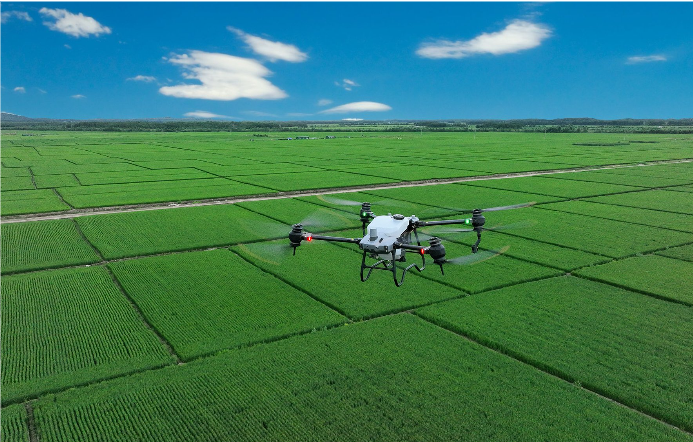Picture this: a sleek, high-tech drone soaring above your fields, meticulously spraying pesticides with pinpoint precision. It sounds like something out of a sci-fi movie, but thanks to advancements in agricultural technology, it’s becoming a reality. Today, we’re diving deep into the world of crop spraying with drones, with a special focus on the game-changing capabilities of DJI agricultural drones.
The growing Trend of Drone Technology in Agriculture
As the global population continues to rise, so does the demand for food production. In response to this challenge, farmers around the world are turning to innovative solutions to increase yields, reduce costs, and minimize environmental impact. Enter drones – the unsung heroes of modern agriculture. According to recent statistics, the global agricultural drone market is projected to reach a staggering $5.19 billion by 2026, driven by factors such as rising adoption of precision farming techniques and advancements in drone technology.
Introducing DJI Agricultural Drones
When it comes to agricultural drones, one name stands head and shoulders above the rest – DJI. Renowned for their reliability, performance, and cutting-edge technology, DJI drones have become the go-to choice for farmers seeking to optimize their operations. And leading the charge is the DJI Mavic 3M – a versatile and powerful drone designed specifically for agricultural applications.
The Benefits of Using Drones for Crop Spraying
Precision Application: One of the biggest advantages of using drones for crop spraying is their ability to deliver pesticides, herbicides, and fertilizers with pinpoint accuracy. Unlike traditional spraying methods, which can result in overspray and wastage, drones can target specific areas of the field, minimizing product usage and environmental impact.
Reduced Labor, cost and Time: Say goodbye to tractors and manual spraying equipment. Drones offer a more efficient and labor-saving alternative, allowing farmers to cover large areas in less time with minimal manpower. This not only saves on labor costs but also frees up valuable time that can be allocated to other farm tasks. According to studies, drones can reduce pesticide use by up to 30%, resulting in significant cost savings and environmental benefits.
Access to Difficult Terrain: Got a hilly or hard-to-reach paddock? No worries – drones can navigate terrain that’s inaccessible to conventional spraying equipment. With their ability to fly low and maneuver in tight spaces, drones ensure that every corner of your field receives the treatment it needs, resulting in more uniform crop protection.
Enhanced Safety: Let’s face it – spraying chemicals can be hazardous work. But with drones, farmers can maintain a safe distance from potentially harmful substances while still achieving effective pest and weed control. This protects the health and safety of farm workers and reduces chemical exposure to nearby communities.
Addressing Concerns and Considerations
Of course, no technology is without its challenges, and crop spraying with drones is no exception. From regulatory compliance to weather dependence, there are several factors that farmers need to consider before integrating drones into their spraying operations. However, with proper training, planning, and adherence to best practices, these challenges can be overcome, paving the way for a more efficient and sustainable approach to crop protection.
Conclusion
In conclusion, the potential of agricultural drones for crop spraying is truly remarkable. From increased precision and efficiency to reduced environmental impact, these drones offer many benefits that can revolutionize farming practices.
So, can drones be used for crop spraying? The answer is a resounding yes, but with careful planning, training, and consideration of both the pros and cons.
As technology continues to evolve and regulations adapt, drones are poised to play an increasingly vital role in the future of agriculture. Here’s to embracing innovation and reaping the rewards of a smarter, more sustainable approach to farming. Cheers to that!

